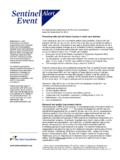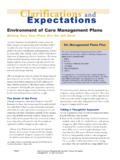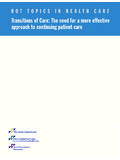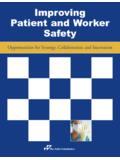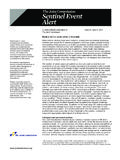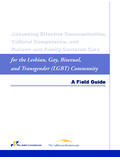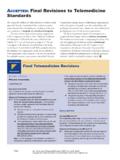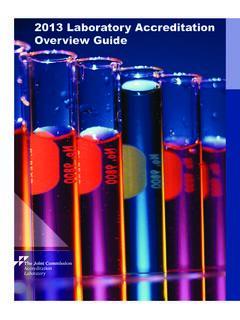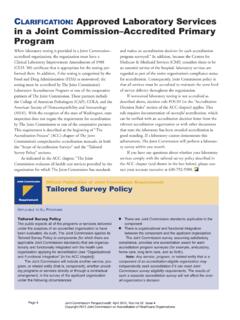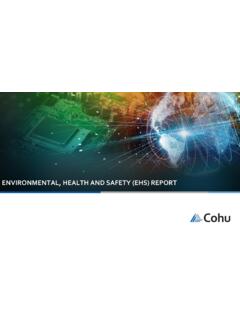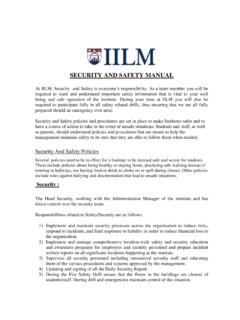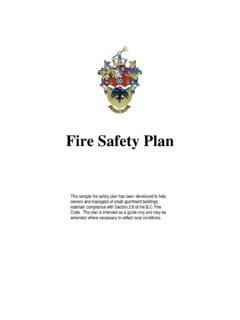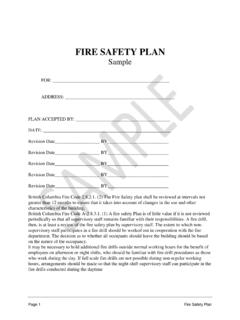Transcription of Prepublication Requirements
1 Prepublication Requirements Issued December 17, 2021 Environment of Care (EC) organization conducts fire (s) of Performance for organization conducts quarterly fire drills in each building defined as an ambulatory health careoccupancy by the Life Safety 1: Evacuation of patients during drills is not 2: When drills are conducted between 9:00 and 6:00 , the organization may usealternative methods to notify staff instead of activating audible 3: In leased or rented facilities, drills need be conducted only in areas of the building that theorganization occupies.(See also , EP 11) organization conducts quarterly fire drills in each building defined as an ambulatory healthcare occupancy by the Life Safety 1: Evacuation of patients during drills is not 2: When drills are conducted between 9:00 and 6:00 , the organization may use acoded announcement to notify staff instead of activating audible alarms.
2 For full text, refer toNFPA 101-2012: 20/21: 3: In leased or rented facilities, drills need be conducted only in areas of the building thatthe organization occupies.(See also , EP 11)Edits to the EC ChapterThe Joint Commission has approved the following revisions for Prepublication . While revised Requirements are published in the semiannual updates to the print manuals (as well as in the online E-dition ), accredited organizations and paid subscribers can also view them in the monthly periodical The Joint Commission Perspectives . To begin your subscription, call 800-746-6578 or visit note: Where applicable, this report shows current standards and EPs first, with deleted language struck-through. Then, the revised requirement follows in bold text, with new language TO THE AMBULATORY HEALTH CARE ACCREDITATION PROGRAME ffective July 1, 2022 2021 The Joint CommissionPage 1 of 4 Prepublication StandardsEffective July 1, 2022 Prepublication Requirements continued December 17, quarterly fire drills are required, they are unannounced and held at unexpected times and undervarying conditions.
3 fire drills include transmission of fire alarm signal and simulation of emergency 1: When drills are conducted between 9:00 and 6:00 , the organization may usealternative methods to notify staff instead of activating audible 2: For full text, refer to NFPA 101-2012: 20/21: ; ; quarterly fire drills are required, they are unannounced and held at unexpected times andunder varying conditions. fire drills include transmission of fire alarm signal and simulation ofemergency fire 1: When drills are conducted between 9:00 and 6:00 , the organization may use acoded announcement to notify staff instead of activating audible 2: fire drills vary by at least one hour for each shift from quarter to quarter, through fourconsecutive 3: For full text, refer to NFPA 101-2012: 20/21: ; ; ; organizations that use aerosol germicides or antiseptics or flammable liquids in conjunctionwith electrosurgery, cautery, lasers, or other ignition sources, the organization performs anannual fire drill in anesthetizing locations.
4 The drill may be announced or unannounced, Thedrill addresses extinguishment of the patient, drapery, clothing, and equipment. (For full text,refer to NFPA 99-2012: ; )Note 1: This drill involves applicable staff and licensed independent practitioners and focuseson prevention as well as simulated extinguishment and 2: An announced annual anesthetizing location fire drill cannot be used to meet one of theunannounced quarterly fire drills required by NFPA 101-2012: 20 organizations that have hyperbaric facilities, emergency procedures and fire training drillsare conducted annually. (For full text, refer to NFPA 99-2012: ; )Note 1: This drill includes recording the time to evacuate all persons from the area, involvesapplicable staff and licensed independent practitioners, and focuses on prevention as well assimulated extinguishment and evacuation. Response procedures for fires within and outside thehyperbaric chamber address the role of the inside observer, the chamber operator, medicalpersonnel, and other personnel, as applicable.
5 For additional guidance, refer to NFPA 99-2012 and 2: If the organization conducts an unannounced drill , it may serve as one of the requiredfire organization maintains fire safety equipment and fire safety building features. Note: This standard does not require organizations to have the types of fire safety equipment and building features described below. However, if these types of equipment or features exist within the building, then the following maintenance, testing, and inspection Requirements (s) of Performance for 2021 The Joint CommissionPage 2 of 4 Prepublication StandardsEffective July 1, 2022 Prepublication Requirements continued December 17, least quarterly, the organization tests supervisory signal devices on the inventory (except valvetamper switches). The results and completion dates are 1: For additional guidance on performing tests, see NFPA 72-2010: Table 2: Supervisory signals include the following: control valves; pressure supervisory; pressure tank,pressure supervisory for a dry pipe (both high and low conditions), steam pressure; water levelsupervisory signal initiating device; water temperature supervisory; and room temperature least quarterly, the organization tests supervisory signal devices on the inventory (exceptvalve tamper switches).
6 The results and completion dates are 1: For additional guidance on performing tests, see NFPA 72-2010: Table 2: Supervisory signal devices include the following: pressure supervisory indicatingdevices (including both high- and low-air pressure switches), water level supervisory indicatingdevices, water temperature supervisory indicating devices, room temperature supervisoryindicating devices, valve supervisory switches, and other supervisory initiating automatic sprinkler systems: Every six months, the organization tests water-storage tank high- andlow-water level alarms. The results and completion dates are : For additional guidance on performing tests, see NFPA 25-2011: ; Table automatic sprinkler systems: Every month during cold weather, the organization tests water-storagetank temperature alarms. The results and completion dates are : For additional guidance on performing tests, see NFPA 25-2011: ; Table automatic sprinkler systems: Every 12 months, the organization tests fire pumps under flow.
7 Theresults and completion dates are : For additional guidance on performing tests, see NFPA 25-2011: automatic sprinkler systems: Every 12 months, the organization tests fire pumps under flow. fire pump supervisory signals for pump running and pump power loss are tested results and completion dates are : For additional guidance on performing tests, see NFPA 25-2011: ; 12 months, the organization tests carbon dioxide and other gaseous automatic fire -extinguishingsystems. The results and completion dates are 1: Discharge of the fire -extinguishing systems is not 2: For full text, refer to NFPA 12-2011: and NFPA 12A-2009: Chapter organization tests automatic fire -extinguishing systems as follows:- Carbon dioxide systems every 12 months- Halon systems every 6 months- Other special systems per National fire Protection Association standards and manufacturers results and completion dates are 1: Discharge of the fire -extinguishing systems is not 2: For full text, refer to NFPA 12-2011: (for carbon dioxide systems) and NFPA12A-2009: (for halon systems).
8 Note 3: For full text, refer to NFPA 11-2010; NFPA 16-2011; NFPA 17-2009; NFPA 17A-2009 forother extinguishing systems. 2021 The Joint CommissionPage 3 of 4 Prepublication StandardsEffective July 1, 2022 Prepublication Requirements continued December 17, organization manages medical equipment (s) of Performance for organization monitors and reports all incidents in which medical equipment is suspected in orattributed to the death, serious injury, or serious illness of any individual, as required by the SafeMedical Devices Act of organization monitors and reports all incidents in which medical equipment is suspected inor attributed to the death, serious injury, or serious illness of any individual, as required by theSafe Medical Devices Act of organization manages risks associated with its utility (s) of Performance for designated for administration of general anesthesia (specifically, inhaled anesthetics) usingmedical gases or vacuum have the following characteristics.
9 - Heating, cooling, and ventilation are in accordance with ASHRAE 170. Medical supply and equipmentmanufacturers instructions are considered before reducing humidity levels to those allowed Existing smoke control systems automatically vent smoke, prevent the recirculation of smokeoriginating within the surgical suite, and prevent the circulation of smoke entering the system intakewithout interfering with exhaust function. New occupancies have no smoke control For ambulatory surgical centers that elect to use The Joint Commission deemed status option:Existing smoke control systems are maintained according to the edition of NFPA 101 adopted by theCenters for Medicare & Medicaid Services at the time of installation.(For full text, refer to NFPA 101-2012: 20 ; NFPA 99-2012: )Note: Smoke evacuation by smoke control systems refers to by-products of combustion from a fire ; itdoes not refer to medical plume caused by thermal destruction of tissue, which is addressed , EP engineered smoke control systems are designed, installed, maintained, and tested perNFPA 92-2012.
10 Existing smoke control systems are tested and maintained to establishedengineering principles unless specifically exempted by the authority having not meeting the performance Requirements of the testing specified in NFPA 101-2012 can be continued in operation only with the specific approval of the authority havingjurisdiction. (For full text, refer to NFPA 101-2012: 20/21: ; NFPA 92-2012)Note: The smoke plume created by the thermal destruction of tissue by cauterizing equipmentand lasers is addressed at Standard , EP 9. 2021 The Joint CommissionPage 4 of 4 Prepublication StandardsEffective July 1, 2022
